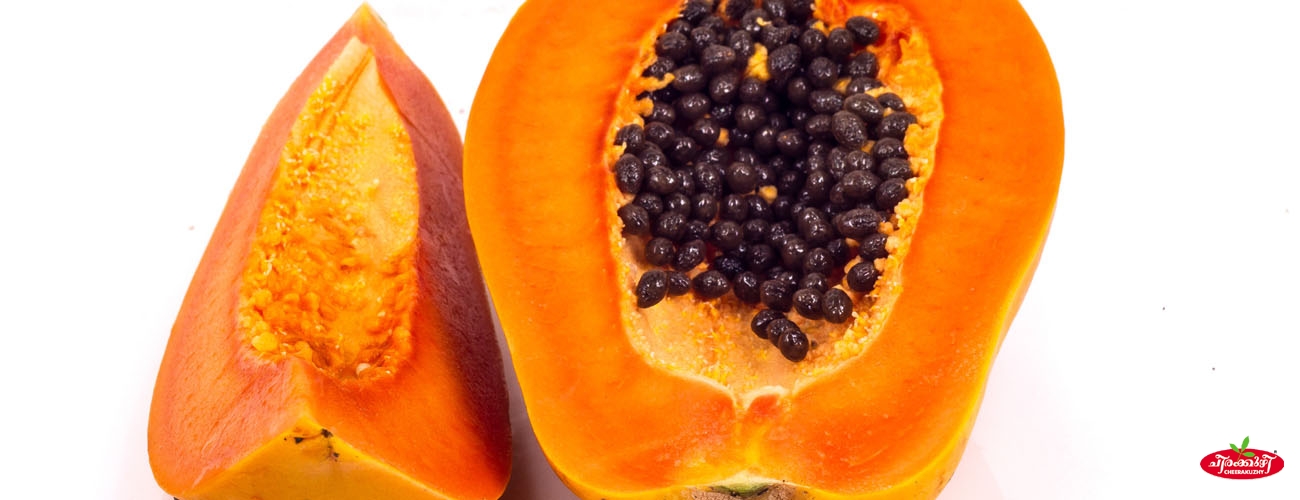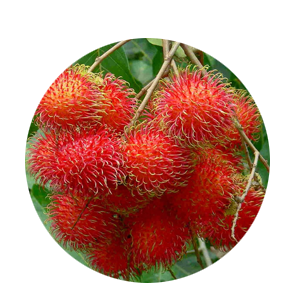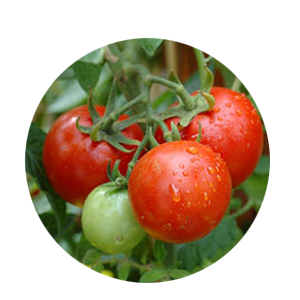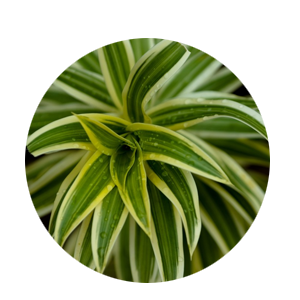Pappaya-Red Lady - Seedling - (5x6 bag)

Item Description
GENERAL INFORMATION ABOUT A PAPAYA The papaya , papaw, or pawpaw is the plant Carica papaya, one of the 22 accepted species in the genus Carica of the family Caricaceae. It is native to the tropics of the Americas, perhaps from southern Mexico and neighboring Central America. The papaya is a small, sparsely branched tree, usually with a single stem growing from 5 to 10 m (16 to 33 ft) tall, with spirally arranged leaves confined to the top of the trunk. The lower trunk is conspicuously scarred where leaves and fruit were borne. The leaves are large, 50–70 cm in diameter, deeply palmately lobed, with seven lobes. The fruit is a large berry about 15–45 cm long and 10–30 cm in diameter. It is ripe when it feels soft (as soft as a ripe avocado or a bit softer) and its skin has attained an amber to orange hue. The ripe fruit of the papaya is usually eaten raw, without skin or seeds. The unripe green fruit can be eaten cooked, usually in curries, salads, and stews. Green papaya is used in Southeast Asian cooking, both raw and cooked HELTH BENENIFTS OF PAPAYA Delicious, papaya fruit is another gift of Mexicans to this world. This exotic fruit is packed with numerous health benefiting nutrients. It is one of the favorites of fruit lovers for its nutritional, digestive, and medicinal properties Here are some health benefits 1.Moisturizes Skin 2.Clears Pigmentation 3.Reduces Wrinkles 4.Reduces Under-Eye Dark Circles 5.Cures Eczema And Psoriasis 6.Treats Melasma 7.Removes Tan 8.Controls Acne Breakout 9.Stimulates Hair Growth 10.Controls Dandruff 11.Conditions Hair 12.Promotes Cardiovascular Health 13.Prevents Macular Degeneration 14.Boosts Immunity 15.Heals Wounds 16.Aids Digestion 17.Has Anticancer Effects 18.Prevents Arthritis 19.Reduce Inflammation In The Lungs 20.Treats Throat Disorders 21.Treatment For Ringworm 22.Helps In Muscle Tissue Renewal 23.Activates Human Growth Hormones 24.Helps Ease Menstrual Pain 25.Helps Reduce Stress
Maintanance, Disease Management And Yielding
MAINTANACE OF THE PLANTATION Once a plantation has been established, the work should not be considered finished. It will be necessary, for example, to protect the plantation against weather, fire, insects and fungi, and animals. A variety of cultural treatments also may be required to meet the purpose of the plantation. FERTILIZING Papaya plant needs heavy doses of manures and fertilizers. Apart from the basal dose of manures (@ 10 kg./plant) applied in the pits, 200-250 g. each of N, P2O5 and K2O are recommended for getting high yield. Application of 200 g. N is optimum for fruit yield but papain yield increases with increase in N upto 300g. WATERING AND WEED CONTROL Young papaya should be watered regularly until fully established. In dry western climates, water mature trees deeply at least every one or two weeks. Desert gardeners may have to water more frequently. Mulch the soil around the trees to conserve moisture. Weeding is also very important. Remove all weeds 1.5 meter around the plant. PRUNING AND SHAPE OF TREE Papayas do not need to be pruned, but some growers pinch the seedlings or cut back established plants to encourage multiple trunks. PEST & DISEASE FOR PAPAYA TREES Every fruit tree has the future potential for disease and insect damage. Factors such as location and weather will play a part in which issues your tree encounters. If available, disease-resistant trees are the best option for easy care; and for all trees, proper maintenance (such as watering, fertilizing, pruning, spraying, weeding, and fall cleanup) can help keep most insects and diseases at bay. HARVESTING YOUR PAPAYA TREE Papayas are ready to harvest when most of the skin is yellow-green. After several days of ripening at room temperature, they will be almost fully yellow and slightly soft to the touch. Dark green fruit will not ripen properly off the tree, even though it may turn yellow on the outside. Mature fruit can be stored at 45° F for about 3 weeks. Papayas are often sliced and eaten by themselves or served with a myriad of other foods. They can also be cooked to make chutney or various desserts. Green papayas should not be eaten raw because of the latex they contain, although they are frequently boiled and eaten as a vegetable. In the West Indies, young leaves are cooked and eaten like spinach. In India, seeds are sometimes used as an adulterant in whole black pepper.
- Propogation Method : Seeds & Bulbs
- Plant Climate : Sub Tropical, Normal, Hot, Cool, Tropical
- Plant Height : Below 1 feet
- Plant Weight : 1 Kg
- Plant Polybagsize : 5x7
Related Images
- Botanical Name : Carica Papaya
- Malayalam Name : Omakka
- English Name : Papaya
if you're planning to lose weight, don't worry to add this light papaya fruit to your diet
Planting Instructions
PLANT THE RIGHT TREE AT RIGHT PLACE Growing space both above and below ground should be considered when selecting a tree to plant. Too often allowances are not made for the increased size of the tree when it matures. Most problems can be avoided by selecting the proper tree species for the available planting space. GENERAL TIPS 1. Plant at least 6 to 10 meter from main overhead utility wires on street or to your home. 2. Plant at least 7 meter from a building. 3. Plant at least 2 meter from sidewalks, driveways, patios and fences. 4. Plant at least 7 to 15 meter from other large trees. 5. Plant at least 7 meter from small trees. 6. Prioritize your tree planting with the sun’s direction to maximize shade by planting on the southwestern and western sides of your home BASIC PARAMETERS TO PLANT A PAPAYA TREE 1. Soil :- Papayas need a light, well-drained soil. They are easily killed by excess moisture. The soil needs to be moist in hot weather and dry in cold weather. Since this is the opposite of California\'s rain pattern, in addition to good drainage, plastic coverings to prevent over-wetting in winter may also be worthwhile. Papayas do not tolerate salty water or soil 2. Planting Distance : For Commercial Plantation:- spacing of 1.8 x 1.8 m. is normally followed. However higher density cultivation with spacing of 1.5 x 1.5 m./ha enhances the returns to the farmer and is recommended. For Home Garden: -In a home garden generally we are planting one or two papaya trees along with other species of fruit plants. So it is better to keep minimum 7 meter distance from other plants to plant a papaya tree. 3. Pit size : Minimum 60cm width X 60cm Breadth X 60cm depth 4. Sunlight : 100% sunlight is best but can grow up to 50 % shade 5. Watering: During dry weather, initially water the plant once in two days and after one month of planting water every 7 to 10 days during the first year. TEN TIPS FOR PLANTING A PAPAYA TREE 1. Dig a hole/pit 3 to 4 times wider than the container (Normally 60cm X 60cm X60cm is recommended). Fill the pit with top fertile soil to allow for proper root growth. Avoid clay type soil to refill the pit. 2. Add 250 gm Rock Phosphate or Born Meal and 3 to 5 kg Cow dung or compost in the top soil of the pit and mix it thoroughly (Thorough mixing of manure with soil is very important because direct contact of manure with the roots of the plant will cause the damage of roots and plant). 3. Make a small hole in the pit and carefully remove the plant from the container/pot or poly bag keeping the soil around the roots intact. Don‘t yank the plant out of the pot or poly bag as this can separate the roots from the tree. Poly bags can be easily removed by cutting it by a knife and pots can be removed easily by hitting slightly at the top edge of the pot. 4. Set the plant in the middle of the hole. Avoid planting the tree too deep. Keep the base of the trunk is slightly above ground level. Using some soil, secure the tree in a straight position, then fill and firmly pack the hole with the original soil, making sure there aren‘t any air pockets. 5. If the plant is Grafted or Budded make sure the grafted or budded portion of the plant is above the soil. Do not allow to touch the grafted or budded portion in the soil as it burns the skin of the plant. 6. Create a water-holding basin around the pit and give the plant a good watering. After the water has soaked in, spread protective mulch 2–4 inches deep in a 3-foot diameter area around the base of the tree, but not touching the trunk. Also provide a stich as a support for the plant, if needed. 7. The soil and mulch around your plant should be kept moist but not soggy. During dry weather, initially water the plant once in two days and after one month of planting water every 7 to 10 days during the first year. 8. Remove any tags and labels from the tree as these will affect the tree as it grows. You may need to prune any broken or dead branches. For Budded or Grafted plants it is very important that do not allow the growth of off shoots under the grafted/budded portion. Allow the growth of budded/grafted scions only. 9. Do not use chemical fertilizer or any other chemicals on your newly planted trees. Such products will kill your young trees. If needed you can add chemical fertilizers in small quantity (generally below 100gm) after two to three months of planting with sufficient irrigation. 10. Do not over water or allow rain water so much that you see standing water in the pit area of the plant. It will damage the plants roots and results the die of your plant.










